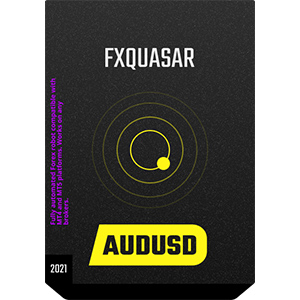
外汇市场可以使用三种不同类型的工具进行分析。技术和基本分析方法是外汇参与者广泛使用的两种方法。第三种是情绪分析。它与人们的心理有关,因此显得更为复杂。交易者可以通过评估公众看法和市场情绪来深入了解价格波动。掌握分析工具和原则可以增强您的盈利能力。什么是市场情绪?请在本文中继续阅读。
理解市场情绪
情绪分析评估交易者的意见,并确定外汇参与者的一般情绪。它通常位于积极和消极极端之间。它涉及审查某些人的感受、期望和信念。这种方法在各个领域都至关重要,比如经济、销售,当然也包括外汇。
情绪分析在外汇中发挥着关键作用,为交易者提供了重要见解。通过分析报纸、博客文章、权威网站和其他信息来源,交易者可以评估人们对特定货币汇率的整体态度。获得的信息是一项宝贵资产,使交易决策更加精准和有利可图。
市场情绪分析中的关键概念
广义上讲,市场情绪衡量交易者对价格波动的期望。因此,它可能偏向积极或消极一侧。在外汇中,它们分别由多头和空头代表:
- 多头。 大多数人大量购买某种货币,并预期其价格上涨。
- 空头。 交易者主要抛售一种货币,并预期其价格很快会下跌。
一般看法可能會隨著新聞、經濟狀況、技術指標和政治事件的變化而改變。除了對交易者情緒的一般理解外,其他概念有助於更好地理解市場:
- 外匯情緒指標。 它具有數值,可以更精確地評估市場狀態。
- 波動率指數,也被稱為恐懼指數。 如果市場上的恐懼程度很高,我們可以說市場情緒看跌。
- 買賣比率。 這個指標的低值代表看漲情緒,反之亦然。
交易者還應該考慮由知名組織進行的調查。監控社交媒體帖子和新聞可以幫助理解市場並預測未來動向。

市場情緒分析的工具和來源
讓我們更仔細地看看不同的工具和來源,這些有助於進行正確的市場情緒分析。許多金融和立法機構分析投資者的意見並發布他們的報告。他們還將他們的研究總結為每個交易者都可以使用的方便和簡單的指標。以下是一些最常見的工具:
- AAII指標(由美國個人投資者協會提供)
- VIX(由芝加哥期權交易所提供)
- SWFX指標
- DailyFX指標
- Cayman指標
這是包含寶貴且信息豐富提示的公開數據列表。現在,讓我們來了解每位交易者都應該了解的主要工具。
用於情緒分析的主要工具
交易者承诺(COT)每周报告是对每个人都非常有用的指标之一。它由商品期货交易委员会发布,提供商品、金融期货、货币、期权和衍生品市场的信息。
发布该报告的机构(CFTC)每周五发布报告。报告主要包含芝加哥和纽约交易所的信息。尽管COT数据的发布有些延迟,但该报告对中长期交易者仍然非常有用。
情绪数据来源
许多来源可以揭示外汇市场的情绪。最知名的来源包括新闻文章、社交媒体帖子、经济指标和财务报告。交易者可以密切关注主要新闻发布、央行声明和地缘政治事件,以评估特定货币周围的情绪。通过分析市场参与者对这些数据的解读方式,您可以更深入地了解情绪驱动因素。
社交媒体平台也提供大量数据。您可以监控各种平台上的讨论和意见,如X、Reddit和外汇论坛。通过监控市场影响者的情绪,所有交易者都可以获得有关外汇市场情绪和潜在交易机会的宝贵见解。
重要的是要注意,使用自动化货币情绪分析工具可以帮助交易者更快地获得深刻理解。您可以使用智能技术获得快速结果,而不是查阅数十家报纸、网站和报告。用于盈利情绪交易的最先进工具之一是最佳外汇机器人。它们利用大量数据分析市场,并为您提供及时准确的信号。
如何解读情绪数据
如果您想要獲得穩定的利潤,則了解如何在外匯市場中使用情感分析並解釋數據是非常重要的。如上所述,這比掌握某些技術指標更為複雜。外匯情感分析需要經驗和得出結論的能力。
我們需要監控人們對重要新聞的反應並注意規律性。比較您在價格圖表上看到的和您從數據來源聽到的。例如,您看到一個上升趨勢,同時一些重要新聞被公佈。曲線如何對事件做出反應?注意價格變動有助於您建立對市場的理解。
不同市場條件下的情感分析
市場運動有三種類型:上升、下降和橫向。無論價格圖表上顯示什麼,新聞都會影響人們的感知。讓我們看看交易者在不同條件下通常如何反應:
- 趨勢上升。正面新聞只會加強看漲預期。中性新聞也不會影響趨勢,情感仍然看漲。如果釋放負面新聞,則稍微看漲。這是由於人類反應的滯後性。
- 趨勢下降。正面新聞不會影響價格方向,交易者的意圖仍然強烈看跌。負面新聞可能削弱整體感知,令人驚訝的是,中性新聞可能導致稍微看漲的預期。
- 市場橫盤。好壞新聞都會導致稍微看漲的市場感知。另一方面,中性信號不會影響橫向運動。
現在您知道外匯市場中的情感分析是什麼以及它如何在市場上運作,是時候弄清楚它的所有優勢和缺點了。
市場情感分析的優勢和局限性
情感分析是一种强大的工具,提供许多好处。它可以显著改善交易策略和风险管理,最终增加您的利润。以下是使这种方法对市场参与者有价值的主要好处:
- 改善策略。分析人们的情绪有助于获得额外的确认或找到矛盾的信号。通过分析市场预期,交易员可以整合这些见解并修订他们的策略。
- 更好的风险管理。通过理解现有的市场情绪,外汇参与者可以更好地评估交易的潜在不确定性。例如,如果您看到积极的预期,就可能存在更高的波动性。在这种情况下,您可以改变头寸大小或设置另一个止损。
- 简单和清晰。情感分析交易通常基于清晰的指标和直接的报告。您无需解释信号 - 您看到清晰的画面。这将帮助您做出更多基于数据的决策。
除了明显的优势外,这种方法也存在一些局限性。重要的是要提到它们,以避免极端的自信和情绪化的行为。交易员面临的主要挑战是这种分析的准确性。情感数据是明确的,但其解释相当困难。这就是为什么您应该依靠您的经验,而不仅仅是基于一个来源做出决策。使用不同的工具和来源来提高您交易的效率。
最重要的是
现在,您知道外汇交易中的情感分析是什么。这种强大的方法提供了许多好处,并为交易员提供了重要信息。它描述了人为因素,并帮助理解投资者的心理。通过掌握情感工具,您可以避免潜在的威胁并完善您的策略。利用它来实现财务成功,并成为更有效的交易员。









